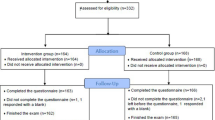Abstract
Objective
The purpose of this study was to evaluate the use and reception of the movie The Bridge as complementary to the suicide curriculum of medical students.
Method
One hundred eighty second-year medical students watched The Bridge as a part of the neuroscience curriculum in understanding suicide. They completed a pre- and post-movie survey regarding the understanding of suicide risk, reasons for suicide, prevention of suicide, and impact of suicide on surviving families. The percentage of answers in categories agree, strongly agree, disagree, and strongly disagree were calculated. The significance of results was calculated using paired t tests. Students were also asked to comment on the movie. The comments were grouped according to themes, and the percentages of comments on each theme were calculated.
Results
Students consistently reported they found watching the movie The Bridge to be valuable. Students were very receptive to the idea of using a movie to augment instruction on suicide and agreed that it reinforced concepts used in lecture. They also believed that The Bridge should be shown to people in the medical field, and more than 80 % of students had detailed comments to make about one or more people in the story or about the story in general.
Conclusions
The Bridge represents a useful method for instructing students and residents on suicide and has utility in medical education. It can and should be used alongside lectures for assisting in education about suicide.
Similar content being viewed by others
References
Centers for Disease Control and Prevention. National Center for Health Statistics National Vital Statistics Reports [Internet]. Hyatsville, MD, 2010–2011. http://www.cdc.gov/nchs/deaths.htm.
Substance Abuse and Mental Health Services Administration, Office of Applied Studies. The NSDHU report: suicidal thoughts and behaviors among adults [Internet]. Rockville, MD. 2009 September 17 http://oas.samhsa.gov/2k9/165/SuicideHTML.pdf.
Luoma JB, Martin CE, Pearson JL. Contact with mental health and primary care providers before suicide: a review of the evidence. Am J Psychiatry. 2002;159:909–16.
Fiedorowicz JE, Tate J, Miller A, Franlkin EM, Gourley R, Rosenbaum M. A medical interviewing curriculum intervention for medical students’ assessment of suicide risk. Acad Psychiatry Adv. 2013;00:1–4.
Madison L, Vas C. Learning risk factors for suicide: a scenario-based activity. Teach Psychol. 2003;302: 123–126.
Hyler SE, Moore J. Teaching psychiatry? Let Hollywood help! Acad Psychiatry. 1996;20:212–9.
Misch DA. Psychosocial formulation training using commercial films. Acad Psychiatry. 2000;24:99–104.
Wedding D, Boyd MA. Movies and mental illness: using films to understand psychopathology. New York: McGraw-Hill College; 1999.
Fritz G, Poe R. The role of a cinema seminar in psychiatric education. Am J Psychiatry. 1979;136(2):207–10.
Sondheimer A. The life stories of children and adolescents using commercial films as teaching aids. Acad Psychiatry. 2000;24(4):214–24.
Kaye D, Ets-Hokin E. The breakfast club utilizing popular film to teach adolescent development. Acad Psychiatry. 2000;24(2):110–6.
Sierles F. Using film as the basis of an American culture course for first-year psychiatry residents. Acad Psychiatry. 2005;29(1):100–4.
Furst B. Bowlby goes to the movies: film as a teaching tool for issues of bereavement, mourning, and grief in medical education. Acad Psychiatry. 2007;31(5):407–10.
American Association of Suicidology. Survivors of Suicide fact sheet [Internet]. Washington, DC. June 22 2009. http://www.suicidology.org/c/document_library/get_file?folderId=232&name=DLFE-160.pdf.
Steele E. The Bridge. Independent Film Channel (IFC). 2007
Steele E. Press notes on The Bridge [Internet]. Independent Film Channel. Easy There Tiger Production. Oct 2007: http://www.thebridge-themovie.com/downloadsection/the_bridge_press_notes.pdf.
ABC News 20/20. The bridge of death [internet]. ABC news internal ventures. Oct 20, 2006; 1–5. http://abcnews.go.com/2020/story?id=2592841.
American Association of Suicidology. Survivors of Suicide Handbook [Internet]. Washington, DC. 2003
Jordan JR. Is suicide bereavement different? A reassessment of the literature. Suicide Life Threat Behav. 2001; 31(1) 91–102.
Acknowledgments
The authors wish to acknowledge the invaluable guidance and impeccable editing provided by Kimberly Best MD, Dilip Ramchandani MD, and Ruth Lamdan MD in the preparation of this document.
Disclosures
On behalf of all authors, the corresponding author states that there is no conflict of interest. No funding was provided for this study. Parts of this program were presented as an original poster at the Association for Academic Psychiatry Meeting (AAP) in September 2010 in Pasadena, CA, and the Philadelphia Psychiatric Society Colloquium of Scholars in March 2011 and 2012.
Author information
Authors and Affiliations
Corresponding author
Additional information
Note: Drs. Retamero and Walsh were affiliated to Temple University Department of Psychiatry, Philadelphia PA by the time this study was conducted.
Rights and permissions
About this article
Cite this article
Retamero, C., Walsh, L. & Otero-Perez, G. Use of the Film The Bridge to Augment the Suicide Curriculum in Undergraduate Medical Education. Acad Psychiatry 38, 605–610 (2014). https://doi.org/10.1007/s40596-014-0086-y
Received:
Accepted:
Published:
Issue Date:
DOI: https://doi.org/10.1007/s40596-014-0086-y




